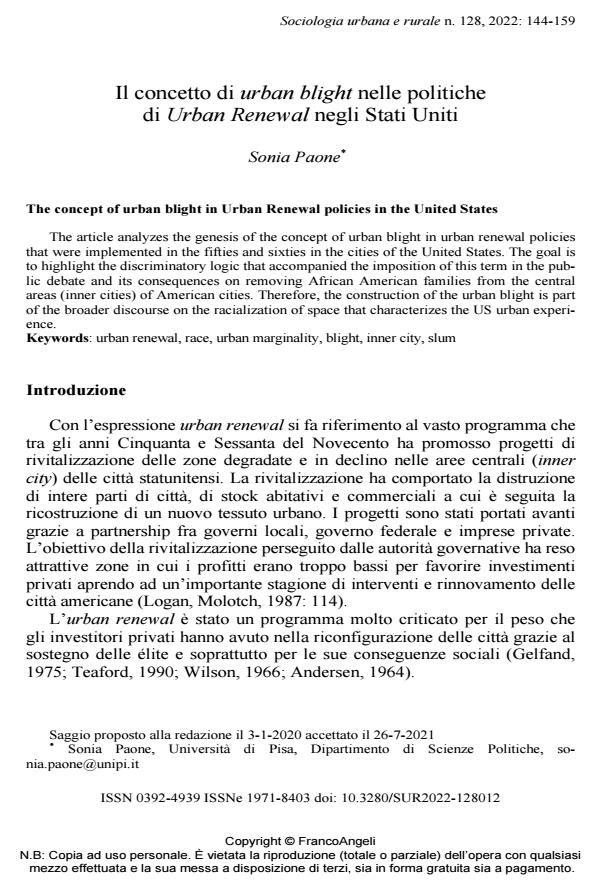Il concetto di urban blight nelle politiche di Urban Renewal negli Stati Uniti
Titolo Rivista SOCIOLOGIA URBANA E RURALE
Autori/Curatori Sonia Paone
Anno di pubblicazione 2022 Fascicolo 2022/128
Lingua Italiano Numero pagine 15 P. 144-158 Dimensione file 202 KB
DOI 10.3280/SUR2022-128012
Il DOI è il codice a barre della proprietà intellettuale: per saperne di più
clicca qui
Qui sotto puoi vedere in anteprima la prima pagina di questo articolo.
Se questo articolo ti interessa, lo puoi acquistare (e scaricare in formato pdf) seguendo le facili indicazioni per acquistare il download credit. Acquista Download Credits per scaricare questo Articolo in formato PDF

FrancoAngeli è membro della Publishers International Linking Association, Inc (PILA)associazione indipendente e non profit per facilitare (attraverso i servizi tecnologici implementati da CrossRef.org) l’accesso degli studiosi ai contenuti digitali nelle pubblicazioni professionali e scientifiche
L’articolo analizza la genesi del concetto di urban blight nel contesto delle politiche di urban renewal che sono state attuate negli anni Cinquanta e Sessanta nelle città degli Stati Uniti. L’obiettivo è quello di evidenziare le logiche discriminatorie che hanno accompagnato l’imposizione di questo termine nel dibattito pubblico e le sue conseguenze sull’allontanamento dalle aree centrali (inner city) delle città americane delle famiglie afroamericane. La costruzione dell’urban blight si inserisce quindi nel più ampio discorso sulla razzializzazione dello spazio che caratterizza l’esperienza urbana statunitense.
Parole chiave:riqualificazione urbana, razza, marginalità urbana, degrado inner city, slum
Sonia Paone, Il concetto di urban blight nelle politiche di Urban Renewal negli Stati Uniti in "SOCIOLOGIA URBANA E RURALE" 128/2022, pp 144-158, DOI: 10.3280/SUR2022-128012